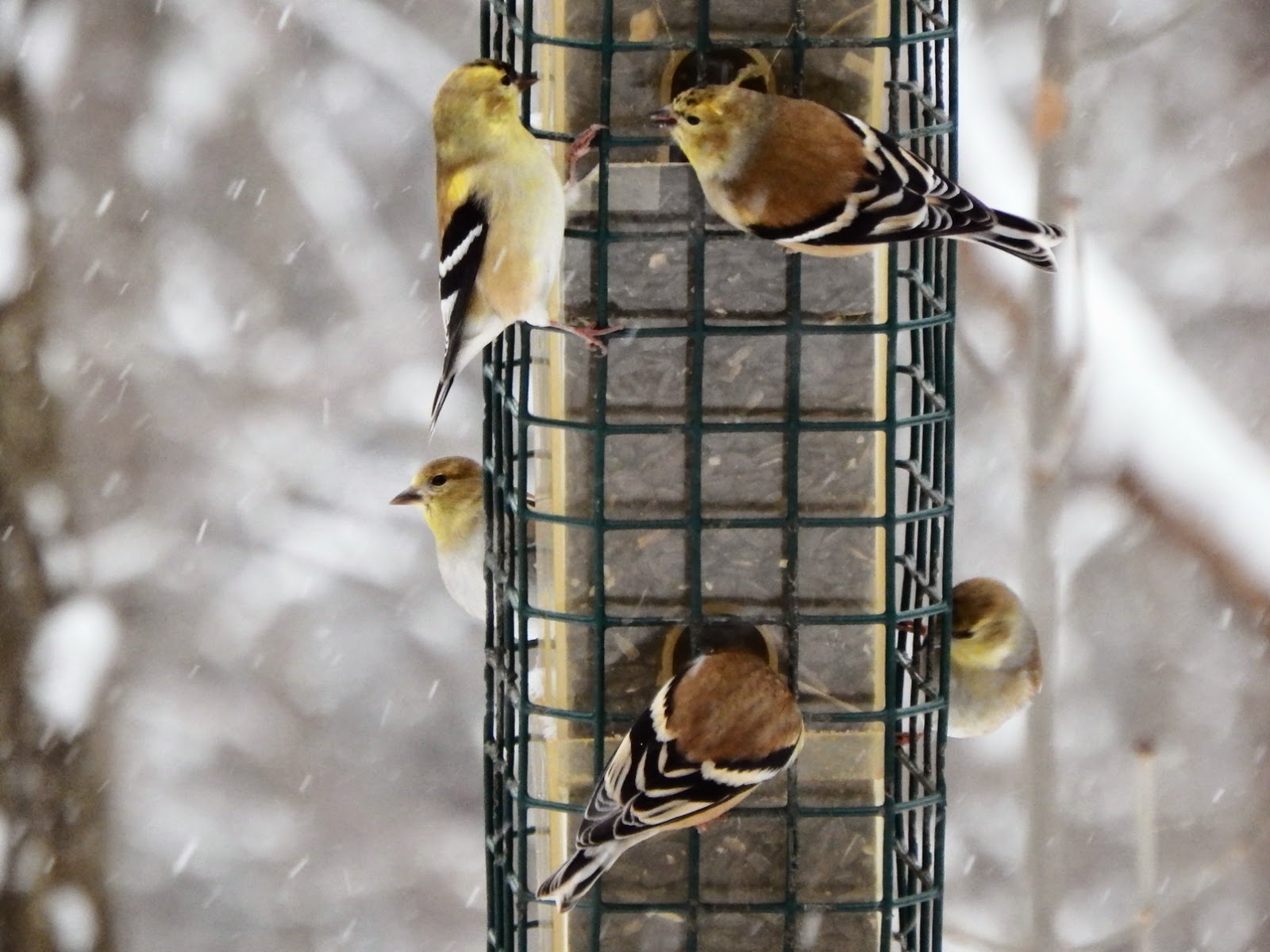Birds Will Soon Be Building Nests!
 |
| I made this nesting ball using cotton batting, shredded cotton stuffing, jute, cotton yarn, clean animal fur and a few feathers. Easy Instructions Below! |
Black Capped Chickadees often move into man-made bird houses. Make sure they have lots of nesting supplies nearby, (see list below) and they will likely make your bird house their home! Birds here in the Northeast typically begin building nests in March and go all the way through June. Some birds even start nesting as early as February.
Here's a List of Nesting Materials commonly used by backyard birds:
- Clean
Animal fur and hair
- Cotton
yarn 4" to 6” long
- Frayed
rope that is no more than 6” long
- Old
cotton mop heads (clean)
- New
cotton balls
- Small
tufts of cotton batting and/or cotton stuffing
- Wool
- Feathers
- Fine
rootlets
- Dry grass
- Thistle
down, colt's foot or dandelion fluff
- Dry
leaves
- Plant
fibers
- Moss
- Lichens
- Flowers
- Twigs
- Straw
How to Offer Nesting Materials for Birds:
- In clean suet cage
- In clean open mesh produce bag
- In open grapevine shape
- Woven through grapevine wreath
This is a fun project for kids and adults of all ages.
Nesting Ball for Wild Birds:
I used a pumpkin grapevine shape that I found at the local hobby supply store. It had lots of spaces for poking in the nesting materials; and it was easy to hang by looping a piece of wire through one of the openings in the top.
After making the hanger loop, I gathered all the materials I decided to stuff the pumpkin with.
I started with the shredded cotton batting and small tufts of cotton stuffing, filling the inside of the pumpkin loosely. You could also use new cotton balls. It's okay to leave a few ends hanging outside the shape so the birds can pull on them.
Next I added some lengths of unbleached cotton yarn, which I also found at the hobby shop. Again, I made sure that the ends were outside the shape, making it easy for little bird beaks to grab onto them.
Then I placed 6 inch pieces of jute in several spots.
After that, I poked in some feathers from an old feather pillow. Birds sometimes use them to line the inside of their nests. My masterpiece was done!
I hung it in a spice bush that lots of birds visit often. The birds have already plucked the jute and yarn pieces! Before long I expect that my nesting ball will become a little sparse as birds pick out their nesting stuff. Not to worry, I saved some materials to replenish what disappears!
There was quite a bit of stuff left, so I used a clean suet cage and filled it with shredded cotton, cotton balls and clean fur. That one was hung in another shrub that the birds like to perch in. It's fun to see what materials the birds like the best.

If the material gets wet with snow or rain, the birds won't use it until it has dried out. If you have a sheltered porch or overhang, or even a dense evergreen shrub or tree, that will help keep things nice and dry.
Have fun!














